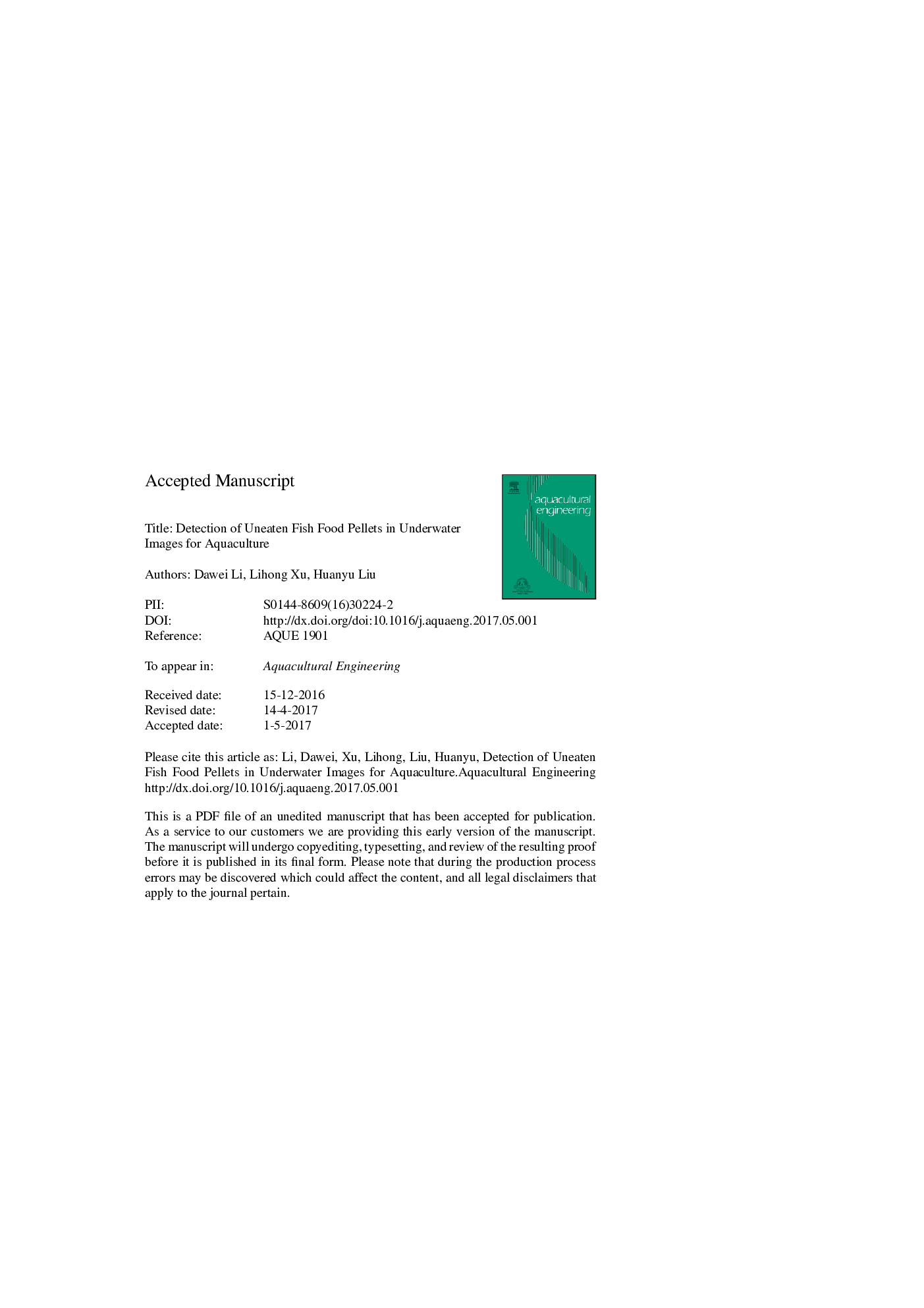| Article ID | Journal | Published Year | Pages | File Type |
|---|---|---|---|---|
| 5763898 | Aquacultural Engineering | 2017 | 24 Pages |
Abstract
The waste of fish food has always been a serious problem in aquaculture. On one hand, the leftover fish food spawns a big economic loss in the industry because feedstuff accounts for a large proportion of the investment. On the other hand, the left over fish food may pollute the water and worsen the living environment of aquatic products. In this paper, we develop an adaptive thresholding method for detecting uneaten fish food in underwater images. To deal with non-uniform illumination in underwater environments, we focus on analyzing the local histogram of intensities in a mask for each pixel. The Expectation-maximization-guided Gaussian mixture is used to fit the histogram to figure out its type, and then an adaptive threshold is computed accordingly. At last the central pixel of the mask is compared with the threshold to generate the binary detection result. Experimental results show that the proposed method obtains desirable detection of leftover fish food in many underwater environments with different water turbidity levels and with different extent of unevenness of illumination. In the four test underwater environments, the lowest True Positive Rate of the proposed method is higher than 80%, and the highest rate reaches 95.9%. The False Positive Rates of the proposed method are no higher than 2.7%.
Related Topics
Life Sciences
Agricultural and Biological Sciences
Aquatic Science
Authors
Dawei Li, Lihong Xu, Huanyu Liu,
